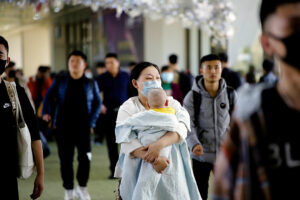HONG KONG — A member of China’s top political advisory body said she would propose allowing unmarried women to access egg freezing as a measure to preserve their fertility after the country’s population fell last year for the first time in six decades.
Lu Weiying, a member of China’s top political advisory body, told the state backed Global Times that she would also propose including infertility treatments in the public health insurance system at the upcoming Chinese People’s Political Consultative Conference (CPPCC), which kicks off on March 4.
Ms. Lu, a fertility doctor in China’s southern Hainan province, said giving single women access to freezing their eggs enables them “to preserve the eggs before they pass their peak reproductive years. The woman still needs to get married if she wants to use her frozen eggs and get pregnant in the future,” she told the Global Times.
Currently fertility treatments such as in vitro fertilization (IVF) and egg freezing in China are banned for unmarried women.
Ms. Lu’s recommendations come as authorities try to bolster a faltering birth rate with incentives including expanding maternity leave, financial and tax benefits for having children as well as housing subsidies.
Last year, China recorded its lowest ever birth rate, of 6.77 births per 1,000 people.
Some provinces have already made changes to their rules to boost birth rates. Jilin in northeastern China, which has one of the lowest birth rates in the country, modified its rules in 2002 to permit single women to access IVF but it has had little impact with the practice still banned nationally under the country’s National Health Commission.
While nine of the 10 most populous nations in the world are experiencing declines in fertility, China’s 2022 fertility rate of 1.18 was the lowest and well below the 2.1 OECD standard for a stable population. China has yet to officially release its fertility data for 2022.
Much of China’s demographic downturn is the result of China’s one-child policy imposed between 1980 and 2015 as well as the high cost of education. — Reuters
